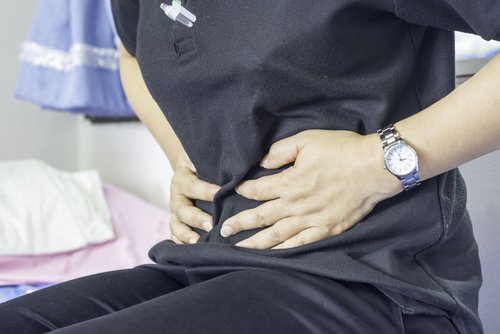Pelvic pain is a very common issue for women approaching middle age, a study has found. And a diagnosis of endometriosis was found to be strongly associated with both menstrual pain and pain during sex.
The study, “The prevalence and potential determinants of dysmenorrhoea and other pelvic pain in women: a prospective study,” was published in the journal BJOG: An International Journal of Obstetrics and Gynaecology.
Pelvic pain, which includes dysmenorrhoea (menstrual pain), dyspareunia (pelvic pain associated with sexual intercourse), and other pain conditions, is estimated to be prevalent in many women.
However, current systematic reviews show varied estimates on the prevalence of pelvic pain. For example, dysmenorrhoea in women of reproductive age ranges between 16% and 91%, while rates of dyspareunia range between 8% and 26.2%.
One of the problems with conducting studies on pain is that there is significant variation in the definition of pain, perception of pain, and complications of these issues due to other conditions.
Therefore, researchers set out to estimate the prevalence of pelvic pain and determine the associated risk factors using a non-biased method.
They used a long-term study that followed 1,037 females, born between 1972 and 1973 in New Zealand, from birth, which was designed to learn more about female sexual and reproductive health. As part of the study, women answered reproductive health questionnaires at the ages of 21, 26, 32 and 38 years, with questions regarding dysmenorrhoea at ages 13 and 15, and on all pelvic pain at 38 years old.
Researchers used data from 429 women in the study who were most recently assessed at 38 years old.
Overall, 54.5% of the 38-year-old women had experienced pelvic pain in the past 12 months. Dysmenorrhoea was reported by 46.2%, dyspareunia by 11.6%, and other pelvic pain by 17.3%.
“The findings confirm a high prevalence of pelvic pain in women and, in particular, period pain was still very common among 38-year-olds at 46 per cent,” Antoinette Righarts, PhD, a postdoctoral fellow and lead author of the study, explained in a press release.
Researchers discovered that women with dysmenorrhea were more likely to also have dyspareunia, both of which were associated with a diagnosis of endometriosis. However, endometriosis was not linked to pain that can occur when young women get their first period.
Interestingly, women who had gone through a pregnancy had a lower risk of developing pain during sex, while women who had experienced childbirth had a lower risk of developing other pelvic pain. Childbirth did not, however, affect the incidence of period pain.
Pelvic pain was also not associated with any long-term negative consequences concerning fertility and reproductive outcomes, researchers found, which is encouraging for women with pelvic pain who are considering having children.
“The study confirms that pelvic pain is common; however, it is a complex condition which requires further study to elucidate the causes,” the researchers said in the study.

